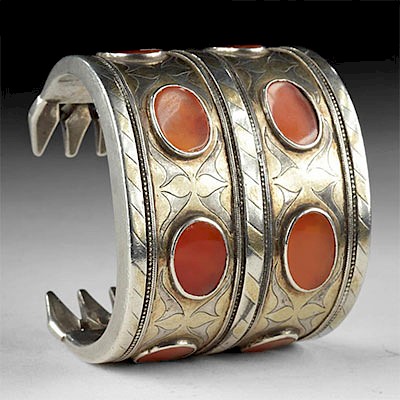Chinese Tang Dynasty Bronze Mirror - Eight Lobed
Lot 92
About Seller
Artemis Fine Arts
686 S Taylor Ave, Ste 106
Louisville, CO 80027
United States
Selling antiquities, ancient and ethnographic art online since 1993, Artemis Gallery specializes in Classical Antiquities (Egyptian, Greek, Roman, Near Eastern), Asian, Pre-Columbian, African / Tribal / Oceanographic art. Our extensive inventory includes pottery, stone, metal, wood, glass and textil...Read more
Categories
Estimate:
$1,200 - $1,800
Absentee vs Live bid
Two ways to bid:
- Leave a max absentee bid and the platform will bid on your behalf up to your maximum bid during the live auction.
- Bid live during the auction and your bids will be submitted real-time to the auctioneer.
Bid Increments
| Price | Bid Increment |
|---|---|
| $0 | $25 |
| $300 | $50 |
| $1,000 | $100 |
| $2,000 | $250 |
| $5,000 | $500 |
| $10,000 | $1,000 |
| $20,000 | $2,500 |
| $50,000 | $5,000 |
| $100,000 | $10,000 |
| $200,000 | $20,000 |
About Auction
By Artemis Fine Arts
Aug 6, 2019
Set Reminder
2019-08-06 11:00:00
2019-08-06 11:00:00
America/New_York
Bidsquare
Bidsquare : VARIETY SALE | Antiquities & Ethnographic Art
https://www.bidsquare.com/auctions/artemis-gallery/variety-sale-antiquities-ethnographic-art-4326
Around the world & back in time - be amazed at the treasures you will find. Antiquities from Egypt, Greece, Italy and the Near East, Asian, Pre-Columbian, African / Tribal / Oceanic, Native American, Spanish Colonial, Russian Icons, Fine Art, much more! All categories, all price ranges... Artemis Fine Arts info@artemisgallery.com
Around the world & back in time - be amazed at the treasures you will find. Antiquities from Egypt, Greece, Italy and the Near East, Asian, Pre-Columbian, African / Tribal / Oceanic, Native American, Spanish Colonial, Russian Icons, Fine Art, much more! All categories, all price ranges... Artemis Fine Arts info@artemisgallery.com
- Lot Description
East Asia, China, Tang Dynasty, ca. 618 to 907 CE. A large silvered bronze mirror with eight lobes and a raised handle. One side is highly polished and reflective, while the other is decorated with a dramatic molded motif of repeated interlocking phoenixes, vines, and grape clusters. In legend, the phoenix is the most beautiful of all birds, called the feng huang, and the etymology of the name is derived from "emperor". The phoenix will only appear in times of prosperity and peace, second only in the supernatural creatures of the Chinese pantheon to the dragon. The presence of the phoenix on this mirror may indicate that it was made to be given to a bride and later hung on the marriage bed, as the phoenix was a good omen for marriages. Size: 8.45" W (21.5 cm)
Mirrors in ancient China served both practical and spiritual purposes. Bronze mirrors were also luxury goods that would have been expensive to produce and therefore to buy. During the Tang Dynasty, we see the first private workshops beginning, allowing the rising merchant class to purchase mirrors in addition to nobles. When placed in a tomb upon the chest of the deceased, as they often were, they were meant to protect the dead from evil spirits, who were frightened of being seen in reflection. In a similarly symbolic move, women carried "marriage mirrors" on their laps during their wedding procession; these were later hung over the marriage bed to repel evil spirits.
Provenance: private Ventura County, California, USA collection
All items legal to buy/sell under U.S. Statute covering cultural patrimony Code 2600, CHAPTER 14, and are guaranteed to be as described or your money back.
A Certificate of Authenticity will accompany all winning bids.
We ship worldwide and handle all shipping in-house for your convenience.
#148103Rich patina on surface, mottled turquoise and dark grey. Polished surface is still in nice condition. Motifs are clear.Condition
- Shipping Info
-
All shipping is handled in-house for your convenience. Your invoice from Artemis Gallery will include shipping calculation instructions. If in doubt, please inquire BEFORE bidding for estimated shipping costs for individual items.
-
- Buyer's Premium



 EUR
EUR CAD
CAD AUD
AUD GBP
GBP MXN
MXN HKD
HKD CNY
CNY MYR
MYR SEK
SEK SGD
SGD CHF
CHF THB
THB













